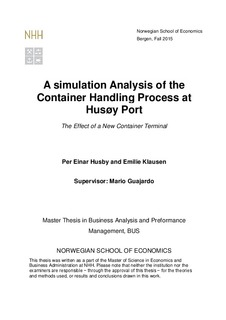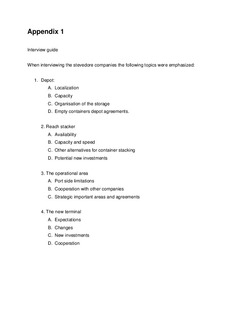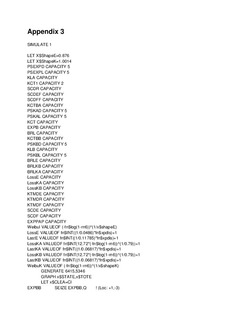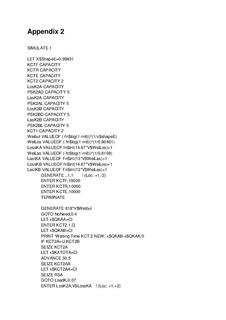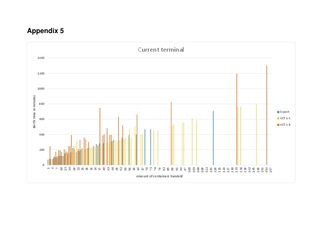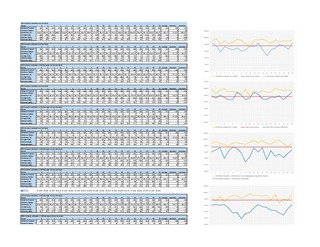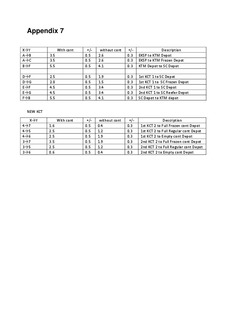| dc.description.abstract | In this thesis we have been using simulation as a method to analyse the structural
changes at Karmsund Container Terminal. By measuring the different steps in the
container handling process, we were able to evaluate how the structural changes
affected the latter process. Structural changes can in this thesis be defined as the
construction of a new container terminal, including relocation of the various facilities
and expanding the quayside.
The simulation also made it possible to do a sensitivity analysis on the ship activity
at the terminal. In this way we could evaluate how the structural changes affected
the container terminals ability to handle an increased number of ship arrivals, as
well as a growth in the container throughput at the terminal.
First we will be introducing relevant theory for this research. Parts of previous
literature were used in the development of the simulation model. The rest is
presented as a basis for the overall evaluation of the result.
Our primary data were collected through interviews and observation when visiting
the container terminal. This information has been crucial for the development of the
simulation model, making sure we captured a realistic picture of the situation.
The secondary data were collected through historical statistics acquired from
Karmsund Port Authorities database. Data concerning the terminal activities for the
last 9 months were collected and processed using different goodness of fit tests.
The distributions developed made it possible to utilize the full extent of the
simulation program by capturing the stochastic dynamic aspects of the port
activities.
The results of the simulation told us that the structural changes potentially could
affect the overall cargo handling process in a positive way. Leading to increased
efficiency and an overall more stable operation. We also found the new terminal
better suited to handle the expected traffic growth to the container terminal. | nb_NO |
